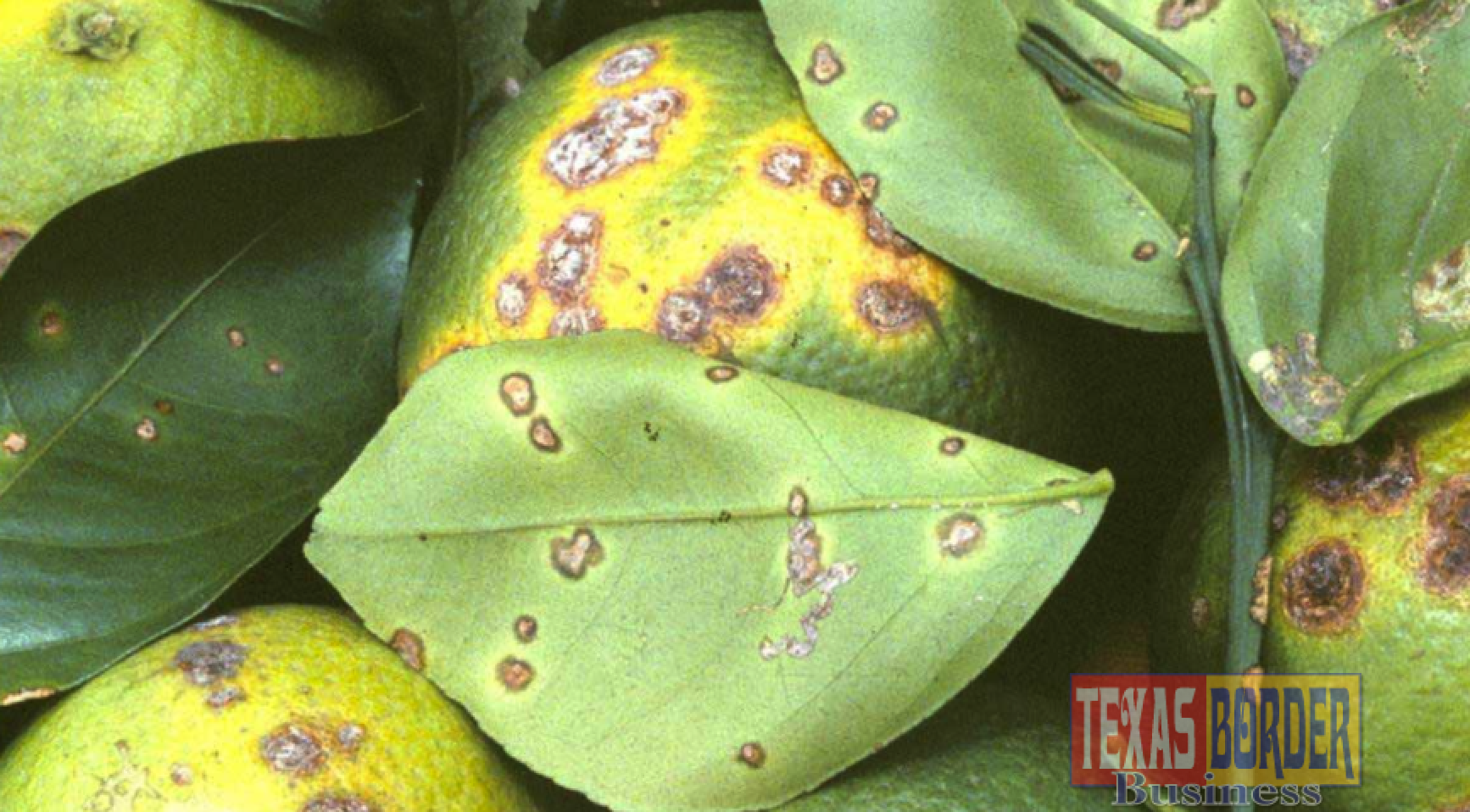
Texas Border Business
November 4, 2015 – Citrus canker, a devastating citrus tree disease, was found in South Texas in Cameron County in a residential golf course property on October 16, 2015. After the first tree was found, USDA conducted an initial delimiting of a 1 mile radius around the positive site. To date, there have been 11 lime trees found positive within that 1 mile radius.
Citrus canker is a bacterial disease that causes lesions on the leaves, stems, and fruit of plants including citrus and other plants in the citrus family. While not harmful to humans, the disease affects the health of infected citrus trees and the marketability of infected fruit. There is no cure for citrus canker. Prevention is the best option to protect against citrus canker. Canker causes the citrus tree to continually decline in health and fruit production until the tree produces no fruit at all. Citrus canker is highly contagious and can be spread rapidly by:
• Wind-driven rain
• Lawnmowers and other landscaping or farm equipment
• People carrying the infection on their hands, clothing or equipment
• Moving infected or exposed plants or plant parts (fruit, leaves or stems)
SYMPTOMS
Citrus canker is mostly a leaf-spotting and fruit rind blemishing disease, but when conditions are highly favorable for infection, infections cause defoliation, shoot dieback and fruit drop.
Citrus canker symptoms include brown spots on leaves, often with an oily or water-soaked appearance. The spots (technically called lesions) are usually surrounded by a yellow halo, and they can be seen on both the upper and lower sides of the leaf. Similar symptoms can appear on fruit and stems.
Also, Citrus Leafminer (CLM) damage created by larvae that feeds by creating shallow tunnels or mines, exposes more tissue to citrus canker infection and increases the infected areas.
SPREAD AND MOVEMENT
Citrus canker is a highly contagious plant disease and spreads rapidly over short distances. Wind-driven rain and water splash are the primary means of short distance spread within and between trees. Irrigation can increase the risk of disease spread.
Contaminated tools and equipment, people and birds can spread citrus canker. Long distance spread occurs through the movement of infected plants or plant parts including nursery trees and propagation material (budwood, rootstock seedlings and budded trees).
Hurricanes and severe weather events of strong winds and rain can spread citrus canker long distances.
Citrus canker bacteria may survive for up to 10 months in lesions on living citrus plants. Survival for long periods is possible in diseased plant tissues including the discolored bark on citrus tree trunks and limbs and in plant debris.
YOU CAN HELP
• If a resident thinks that they see symptoms, DO NOT TAKE SAMPLES as moving samples can spread the disease. Contact www.saveourcitrus.org to report suspect trees.
• Check your citrus trees every two weeks for symptoms of both citrus canker disease and citrus greening disease.
• If you see citrus canker symptoms, contact: www.saveourcitrus.org
For more information from USDA, contact Yindra Dixon (301) 851-4096.















